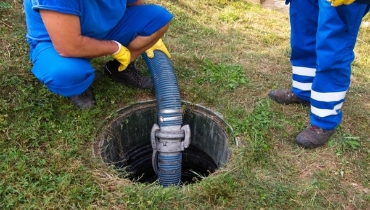What Does Stillwell Septic And Grading Do?
What Does Stillwell Septic And Grading Do?
Blog Article
Stillwell Septic And Grading Things To Know Before You Buy
Table of ContentsExcitement About Stillwell Septic And GradingOur Stillwell Septic And Grading DiariesGet This Report about Stillwell Septic And GradingSome Ideas on Stillwell Septic And Grading You Need To KnowThe 20-Second Trick For Stillwell Septic And Grading5 Easy Facts About Stillwell Septic And Grading ShownThe Stillwell Septic And Grading Diaries
In general, septic storage tank setup is a complicated procedure that needs careful planning and execution. Homeowners should deal with a reputable installation team and recognize regional regulations and needs to guarantee that their septic tank works effectively for years to find. After the septic tank has been set up and connected to the drain field, it is time to backfill the location.The backfill product ought to be without clods, large rocks, icy matter, and debris that can result in spaces in the backfill that may permit settling with time. Squashed rock or pea gravel 1/2-inch in size is favored if indigenous materials are not ideal. Once the backfilling is complete, it is time to landscape the location.
Once the septic tank has actually been mounted, it is crucial to test it to ensure that it is working properly (Stillwell Septic). https://businesslistingplus.com/profile/stillwellsag/. Checking the system entails inspecting for leakages, guaranteeing that the storage tank goes to the proper level, and taking a look at the drain field. One of one of the most common tests executed is the hydraulic load test
Stillwell Septic And Grading - Questions
The water is after that checked to make certain that it moves appropriately via the pipelines and right into the drain field. If the water does not move properly or backs up into the tank, it might suggest a trouble with the system. An additional examination that is frequently carried out is the dye examination.
The dye is after that checked to ensure that it streams appropriately with the pipelines and into the drain field. If the color does not stream correctly or shows up in the wrong location, it might indicate a problem with the system. It is important to have a professional perform these examinations to make certain that they are done correctly.

The Best Strategy To Use For Stillwell Septic And Grading
Here are some important pointers for homeowners to keep their septic tank: The ordinary home septic system ought to be examined a minimum of every three years by a septic service expert. The regularity of pumping depends on the size of the tank and the variety of people using it. https://stillwell-septic-and-grading.webflow.io/. A basic regulation of thumb is to pump the container every 3 to 5 years
Utilizing water-efficient fixtures and appliances, such as low-flow showerheads and toilets, can reduce water use and aid the septic system work more effectively. Just flush toilet tissue and human waste down the commode. Prevent purging anything else, consisting of womanly health items, child wipes, and cooking oil, as they can obstruct the system.
How Stillwell Septic And Grading can Save You Time, Stress, and Money.
Sewage-disposal tank installation is a complex procedure that calls for mindful planning and implementation. Home owners have to understand the required steps entailed in the setup process to ensure that their septic system operates correctly and successfully. The first action is to review the site where the septic system will be installed.
As soon as the site has actually been evaluated, the following step is to prepare for the installment. Property owners have to make sure that their contractor is experienced in septic tank setup and will work along with them throughout the process.
The Ultimate Guide To Stillwell Septic And Grading

Property owners have to recognize the required actions included in the setup procedure to guarantee that their septic tank operates effectively and effectively. By following these steps and maintaining their system, homeowners can rest guaranteed that their septic tank will certainly supply trustworthy wastewater treatment for years ahead.
Almost one in five United state homes have septic systems. If you're not correctly preserving your septic system, you're not just hurting the atmosphere, you're placing your family's wellness at riskand may be purging thousands of bucks down the drainpipe!
The Best Strategy To Use For Stillwell Septic And Grading

All that extra water can truly stress your septic tank. Startle making use of water-generating devices. This can be handy especially if your system has actually not been pumped in a long period of time. Become extra water effective by taking care of plumbing leakages and think about setting up restroom and kitchen faucet aerators and water-efficient products.
Fascination About Stillwell Septic And Grading
Know your system's area. When you have the container pumped, attract a layout or map showing its location in connection with fixed factors - corners of your house, actions, or fencing messages. Ask the pumper to aid you find the drainfield. Note Continue its area on your diagram, together with the area of your drinking water well.
Minimize the quantity of wastewater that should be treated and disposed of by your system: Laundry no more than one or two loads of clothes daily. Up to 53 gallons of water flood your septic system with each load, so it's best to spread out washing out over the week.
Report this page